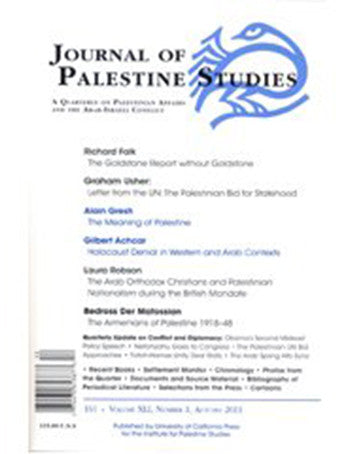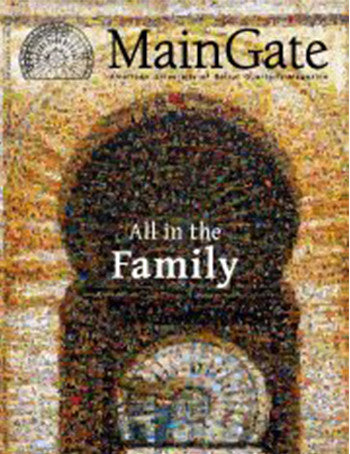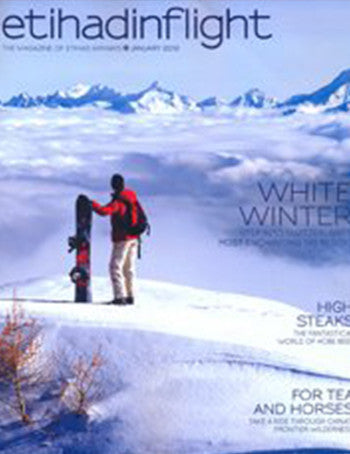
JOURNAL OF PALESTINE STUDIES
Maintaining Legacy
Traditional Arabic or Palestinian arts have tended to prioritize poetry, with visual culture relegated to a supporting role. And yet, as Widad Kamel Kawar's book Threads of Identity demonstrates, the exquisite artistry of Palestinian and bedouin women's needlework, more than most art forms, poignantly reflects the tragedy of dispossessed identities while uniquely expressing Palestinian cultural resilience.
Based on years of painstaking collection, research, and conversations-and richly illustrated with photographs of textiles, family portraits, and pre-Nakba towns and villages-Threads of Identity is a heartrending document of recent Palestinian socioeconomic history narrated through women's dressmaking and embroidery patterns and the oral testimonies of the women who made and wore the costumes, particularly those lovingly produced for bridal or festive occasions.
The book traces a period from the mid-1800s to 1948 and its aftermath as experienced through women's lives. The pre-1948 era was a time of immense creative vitality shared equally by Muslim and Christian: the rise of Palestinian nationalist pride and the development of modernity, albeit against a background of the gathering Zionist storm. The period also saw the emergence of embroidery as an aesthetic language in its own right. The central "character" in Kawar's narrative is the embroidered thob, the traditional Palestinian costume, and its accessories. Focusing on Palestinian commercial urban centers and their satellite rural villages, the book reveals how distinctive embroidery patterns, stitching, color combinations, choice of fabrics, costume cut, and even the names of the designs reflected Palestinian belonging to both local community and land. At the same time, designs were always open to influence as women meeting at the marketplace, the hammam (public bathhouse), and domestic gatherings exchanged new ideas. Equally important to note is that women's dressmaking and embroidery, especially for bridal trousseaux, supported a vibrant socioeconomic network of silk, cotton, and linen producers; weavers; dyers; and thread and fabric merchants extending from Egypt to Syria and beyond-all of which after 1967 was to wither with Israel's continuing evictions, border closures, and restrictions on travel and commerce.
People respond differently to traumatic events; as Kawar relates, some women were unable to speak about their experiences of dispossession and often, serial enforced displacements, while others were eager to tell their stories for future generations. Kawar's response to the brutal assault on Palestinian societies was a determination to preserve a heritage in danger of being lost. Her own story is embedded in this collision of women's daily lives with historical events. Its trajectory-her early years in Tulkarm, Bethlehem, Ramallah, Beirut, and later Amman, where after 1967 she became a member of the YMCA and the Women's Auxiliary of UNRWA-put her in touch with local textile traditions and eventually with those of women from all parts of Palestine, whose once comfortable lives were now reduced to ~ poverished exile in the refugee camps of Lebanon and Jordan.
Poverty meant that those few portable items that the women were able to salvage-their jewellery and dresses-eventually had to be sold to survive, although Hasna (originally from Isdud, now living in al-Baqa'a refugee camp, Amman), who speaks of Israelis napalm-bombing the al'Amb camp near Hebron in 1967, had managed to retain three of her best costumes, while Ruqiya (originally from Bayt Dajan, now living in Wadi 'Abdun, Amman), still held the deeds to her orange grove. Camp women now relied for their livelihood on workshops set up by UNRWA and other NGOs to market embroidery products. Although criticism has been legitimately voiced concerning exploitation and the loss of quality in these camp enterprises, they remain the means of survival and transformation of embroidery traditions: the "camp" style combining regional motifs or the post-1987 "intifada" dress, embroidered with symbols of Palestinian national identity.
Kawar's narrative studiously avoids political polemic, enabling the women to tell their own stories. But it is through these witnesses to everyday life that the reader begins to comprehend the savage injustice perpetrated against the Palestinians. For instance, the observation in passing that a single olive tree could produce an income of $200 per annum invokes the enormity of illegal settlers willfully uprooting or burning whole olive groves carefully nurtured over many generations; or that a journey between Bethlehem and Jerusalem that once took fifteen minutes may now take more than three hours, even with the right permits. As Threads of Identity discloses, the vibrant embroidery of the costumes speaks a language of hope that instead witnessed more than sixty years of occupation, criminal theft, and exile; and yet, it survives to tell the next chapter of the Palestinian story.
Reviewed by Jean Fisher
Jean Fisher, professor of fine art and transcultural studies at Middlesex University, is the coeditor of Over Here: International Perspectives on Art and Culture (MIT Press, 2004).
Journal of Palestine Studies
161 - Vol. XLI, No.1, Autumn 2011 - pages 119-120


